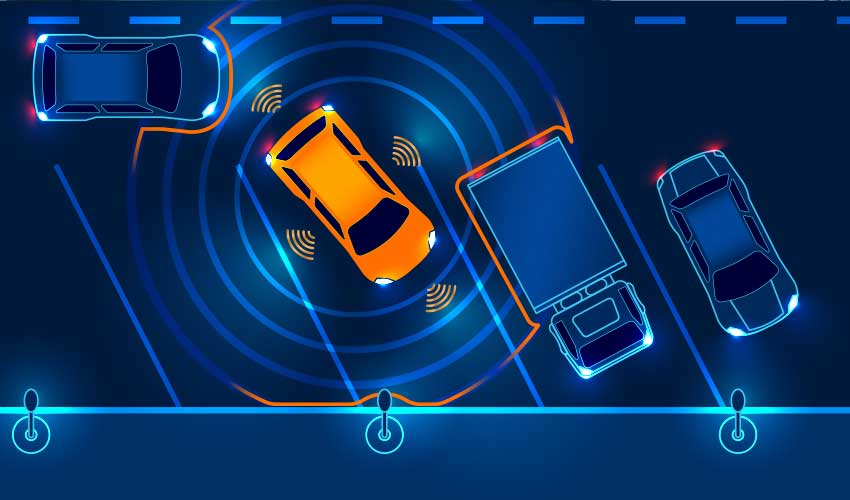
Automotive IoT: Benefits, Applications, and Real Examples
By Udit Agarwal

The Internet of Things (IoT) has revolutionised various industries, and the automotive sector is no exception. The convergence of automobiles and IoT has given rise to Automotive IoT, which involves connecting vehicles with the Internet and enabling them to communicate with other devices, systems, and networks. This article will discuss the benefits, applications, and real-life examples of Automotive IoT.
Benefits of Automotive IoT:
- Enhanced Safety: One of the main advantages of IoT is improved safety. Connected vehicles can communicate with each other and with roadside infrastructure, enabling the exchange of critical information. Real-time communication helps prevent accidents, identify potential hazards, and issue warnings to drivers.IoT-enabled features such as collision avoidance systems, adaptive cruise control, and lane departure warnings enhance road safety.
- Efficient Traffic Management: IoT is vital in optimising traffic management. IoT-enabled traffic management systems can gather data from vehicles, road sensors, and other sources to analyse traffic patterns and congestion levels and optimise traffic flow. This leads to reduced travel time, better route planning, and improved overall traffic management, resulting in fuel savings and reduced emissions.
- Predictive Maintenance: IoT technology allows vehicles to collect and transmit real-time data about their condition, performance, and maintenance needs. This enables proactive maintenance and reduces the risk of unexpected breakdowns. IoT can monitor parameters such as engine performance, tire pressure, and fluid levels and notify drivers or service centres about potential issues. Predictive maintenance helps in maximising vehicle uptime, reducing maintenance costs, and enhancing overall reliability.

- Improved Driver Experience: IoT enhances the overall driving experience for users. Connected vehicles can offer personalised features such as in-car entertainment, real-time navigation, voice commands, and intelligent assistants. IoT-enabled features enable remote access and control, allowing drivers to lock/unlock doors, start/stop engines, and control climate settings using mobile applications. These features provide convenience and customisation, making the driving experience more enjoyable.
- Fuel Efficiency and Emissions Reduction: IoT can improve fuel efficiency and reduce emissions. Connected vehicles can monitor driving patterns, analyse fuel consumption, and provide real-time feedback to drivers on efficient driving techniques. IoT-enabled fleet management systems can optimise routes, reduce idle time, and ensure better fuel utilisation. These measures lead to fuel savings, lower carbon footprint, and environmental benefits.
Applications of Automotive IoT:
- Connected Car Services: IoT enables various related car services such as remote diagnostics, stolen vehicle tracking, emergency assistance, and remote control features. These services enhance vehicle security, convenience, and connectivity.
- Autonomous Driving: IoT technology is crucial for developing and deploying autonomous vehicles. Connected sensors, cameras, and other IoT devices provide the necessary data for autonomous driving systems to perceive the environment and make informed decisions.
- Fleet Management: IoT plays a significant role in fleet management, enabling real-time tracking, remote monitoring, and optimisation of vehicle fleets. IoT-enabled fleet management systems provide insights into vehicle performance, driver behaviour, fuel consumption, and maintenance needs.
- Smart Traffic Management: Automotive IoT facilitates intelligent traffic management systems that optimise traffic flow, detect congestion, manage traffic signals, and provide real-time traffic information to drivers.

Real-life Examples of Automotive IoT:
- Tesla: Tesla’s vehicles are prime examples of Automotive IoT. They have various sensors, cameras, and connectivity features that enable autonomous driving capabilities, over-the-air software updates, and remote monitoring.
- BMW ConnectedDrive: BMW’s ConnectedDrive platform utilises IoT technology to provide connected services such as remote control features, real-time traffic information, and concierge services. It also offers integration with smartphones and smart home devices.
- FordPass: FordPass is a mobile application that connects Ford vehicle owners with their vehicles, offering features like remote start/stop, vehicle status monitoring, and service scheduling. It provides a seamless connected experience to enhance the overall ownership experience.
- General Motors OnStar: OnStar is an IoT-based system offered by General Motors that provides various services such as automatic crash response, roadside assistance, vehicle diagnostics, and stolen vehicle tracking.
Bottom Line
In conclusion, IoT transforms the automotive industry by enhancing safety, optimising traffic management, enabling predictive maintenance, improving the driver experience, and promoting fuel efficiency. With applications ranging from connected car services to autonomous driving and fleet management, Automotive IoT is revolutionising how vehicles operate and interact with the surrounding environment. Real examples like Tesla, BMW ConnectedDrive, FordPass, and General Motors OnStar demonstrate the practical implementation of IoT technology in the automotive sector. As IoT continues to evolve, we can expect further advancements and innovations in the field of Automotive IoT, bringing numerous benefits to manufacturers and users alike.